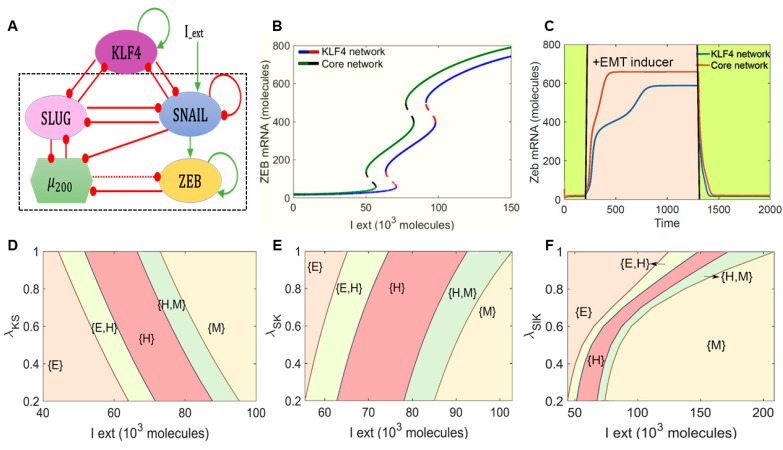Figure 1.
KLF4 inhibits EMT. (A) Schematic representation of KLF4 coupled to an EMT regulatory network consisting of miR-200, ZEB1, SNAIL, and SLUG. Green arrows denote activation, and red bars indicate inhibition. Solid arrows represent transcriptional regulation; a dotted line represents microRNA-mediated regulation. The circuit shown within the dotted rectangle is the control case (i.e., core EMT network without KLF4). (B) Bifurcation diagrams indicating ZEB1/2 mRNA levels for increasing the external signal (I) levels for the coupled EMT–KLF4 circuit (solid blue and dotted red curve) and the core EMT circuit (solid green and dotted black curve). (C) Temporal dynamics of the ZEB1/2 mRNA levels in a cell starting in an epithelial phenotype when exposed to a high level of an external EMT signal (I_ext = 100,000 molecules) (pink-shaded region) for the circuits shown in (A)). (D–F) Phase diagrams for the KLF4–EMT network driven by an external signal (I_ext) for (D) varying strengths of repression on SNAIL by KLF4, (E) for varying strengths of repression on KLF4 by SNAIL, and (F) for varying strengths of repression on SLUG by KLF4.

